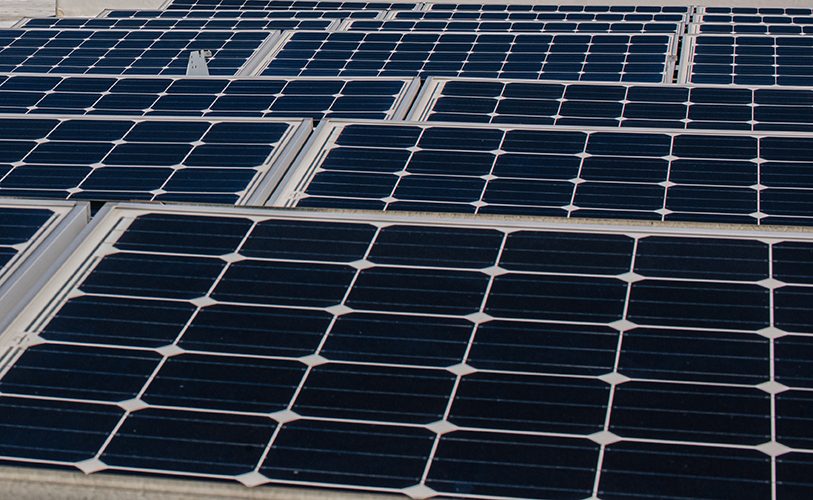Electrify It All, Immediately?
Electrification makes sense when we have the infrastructure to support it, but not before.

Whether you believe the polar ice caps are melting as a result of fossil fuel emissions or not, I think we can all agree that reducing air pollution is a good thing for the globe. There’s a great deal of evidence that the air pollution created by the human race has a negative impact on our health and the health of the environment.
The use of fossil fuels is a major contributor to air pollution. The U.S. Energy Information Administration reports that as of 2021, the greatest energy source we utilize is petroleum (gasoline, fuel oil, diesel), closely followed by natural gas. Roughly one-third of our energy is supplied by coal, nuclear and renewables. Now, renewables are interesting, because most people think of all renewables as zero-emissions energy sources. In fact, biomass, biofuels and wood fall into the same category as solar, hydro and wind.
Of more interest to those of us in the HVAC industry is the fact that 40 percent of total U.S. energy consumption can be attributed to buildings, and roughly 50 percent of that is for heating and cooling. That means that, ballpark, residential and commercial heating and cooling are accountable for 20 percent of all energy consumed in the U.S.
Electrification and Decarbonization
If you’re in the trade, you’ve heard the terms “electrification” and “decarbonization” used interchangeably. Heat pump technology has come a long way in the past five years, and we’re seeing greater and greater application of these systems in the field, both residential and commercial.
But is the march toward electrification really reducing our use of fossil fuels? Electrical power needs to be generated, and the inescapable fact is that fossil fuels are still the largest source of that energy, by a huge margin. Those who are enamored with the idea of electrification are quick to say that power derived from solar and wind is much cleaner than burning fuel.
That’s not false, but replacing our fossil fuel power generation isn’t a reality given our current infrastructure. Can our infrastructure be upgraded? Yes, over many years and subject to technological advancements (more on that later).
To again cite the EIA, wind, hydro and solar account for 18.3 percent of the nation’s electric power. Natural gas, on the other hand, provides nearly 40 percent of our power.
Real World Comparison
So let’s compare a natural gas power plant to a condensing boiler.
InsideEnergy.org states that the average power plant in the U.S. is about 35 percent efficient. I couldn’t believe it was that dismal, so I kept looking. The below excerpt is the best that Google could provide:
“Natural gas power plant efficiency depends on the type of power plant, the use of waste heat, and the fuel source. There are three forms of natural gas power plants: steam generation, simple cycle, and combined cycle. Steam generation power plants use natural gas to heat water and steam to spin a turbine, and have an efficiency of about 35%. Simple cycle power plants use gas turbines only, and have an efficiency of 20 to 38%. Combined cycle power plants use gas turbines and steam turbines together, and have an efficiency of 60% or more. When waste heat from power plants is captured for heating or industrial purposes, the overall energy cycle efficiency could approach 80%. The average efficiency of fossil-fueled power plants in the United States is 36%.”
Read the last line again. The average natural gas power plant in the U.S. is 36 percent efficient, and in a best-case scenario, they may approach 80%. As if that’s not bad enough, we now have to account for transmission and distribution losses. InsideEnergy.org states that transmission losses vary by region, anywhere from 2.2% in Wyoming to 13.3% in Idaho, with a national average of 6%. So in reality, the electrical grid in the United States is 30% efficient.
In comparison, the residential and commercial boilers that I install are 95% to 96% efficient. That’s their rated AFUE, anyway. They’ll lose some efficiency if they’re not serviced properly. Or maybe someone didn’t design the hydronic system with a proper Delta-T, meaning that the unit won’t condense as intended. These things could lower their actual efficiency, but I can’t think of a scenario where a high-efficiency boiler could possibly be performing at 30% efficiency.
Proponents of heat pumps are quick to bring up the coefficient of performance, or the ratio of the useful heating or cooling provided to energy required. Heat pumps are more than 100% efficient. Air-to-air heat pumps deliver more heating or cooling capacity than the energy they consume, at times two or three times more, depending on the model and, most importantly, the outdoor conditions. If a heat pump were able to operate at a COP of 3 year-round (which is almost impossible for a unit installed north of the Mason Dixon line), it would mean that 90% of the energy in the natural gas used to power it is being delivered to the indoor space.
Heat pumps work, I’m hardly disputing that. They also add considerable strain to a grid that’s, in many places, overtaxed. Blackouts and brownouts are occurring with greater frequency in a number of U.S. metro areas.
Thinking critically, I’m extremely skeptical that electrification of HVAC equipment is the answer to our air pollution problem, at least right now. And there is the caveat.
Electrification may be the answer in the future, but when and how that occurs will be determined by electrical infrastructure improvements and technological advances.
Greening the Grid
There’s a dystopian concept that the grid can magically become “green” by replacing fossil fuel generation with solar, wind and hydro capacity. I write off hydro immediately. Some environmental groups exist solely to advocate for the removal of large dams from our river systems due to the negative environmental impact. Droughts across the Southwest have residents in cities like Las Vegas wondering where their power and water will come from in a decade.
Wind isn’t much better. Wind turbines have a sizable carbon footprint which offsets the clean power they produce. Their visual impact is big, they make noise, and they can kill any wildlife with wings. Wind power is intermittent, too. How often have you driven by a wind farm and the blades weren’t moving?
Solar makes the most sense, especially when installed at point of use. I think the Obama-era solar incentives were a fantastic way to reduce the demand on the electrical grid and offset a portion of our fossil fuel generation. But at the end of the day, solar is a supplementary source of power, as are all other current “green” options. That’s largely due to their intermittency.
Solar only works when the sun is shining and wind turbines only work when the wind is blowing. Implementing these technologies at scale would create a colossal energy storage and reliability problem.
The reliability of a power grid is determined, in large part, by its baseload capacity. Baseload power sources are dependable, modulating power generation infrastructure that’s constantly online satisfying the bulk of the energy demand regardless of what the weather is doing. Coal, natural gas and nuclear power are the only sources of energy that can be harnessed for baseload. Everything else is supplementary.
In the Future
What, in my humble opinion, is the one thing that turns “decarbonization of the grid” from a disastrous pipedream to a sustainable reality? Nuclear power.
Nuclear power has a tarnished reputation, thanks to Three Mile Island, Chernobyl and Fukushima, but technology changes. The latest advancement is the small modular reactor.
A U.S.-based company, Nuscale, is working on miniature nuclear reactors, while Russia has already launched one. In 2016, China indicated their intent to develop an SMR. The Rolls-Royce Consortium in the UK is developing an SMR, and three Canadian provinces are looking into the technology as well.
I think that electrification makes sense when we have the infrastructure to support it, but not before. If governments wish to encourage electrification, do so by incentivizing solar photovoltaic installations. Putting the cart before the horse, as we are right now, is dangerous and counterproductive to the goal of reducing our environmental impact.
The key to making progress in this arena is to approach the topic without letting politics cloud our judgment. The left wants to paint a picture of electrification being the golden ticket to keep sea levels from rising while the right wants to “drill, Baby drill.” Both are laughable. Only with cooler minds and a scientific approach will we prevail.
It will also be important, in my opinion, to give the utmost attention to remaining energy independent as a nation. If anyone disagrees with my stance, I’d simply ask how the current Ukrainian conflict would be different if Europe wasn’t so dependent on Russian oil and gas.





